We’ve all been there. You wake up on vacation, in a new place. All you have to do is brew your espresso, then relax…until you realize that you don’t have your grinder handy!
Luckily, there are many ways to crush your beans so you can enjoy your cup of joe no matter what.
We’ll tell you how to grind coffee beans without a grinder using basic tools and techniques that anyone can master.
What is Coffee Grinding?
You may think that pre-ground coffee is OK…until you try coffee brewed from freshly ground whole beans.
Whether you use a semi-automatic, superautomatic, or classic French Press, the way you handle your beans will dictate the overall flavor and aroma of your coffee drink. And that’s a big deal!
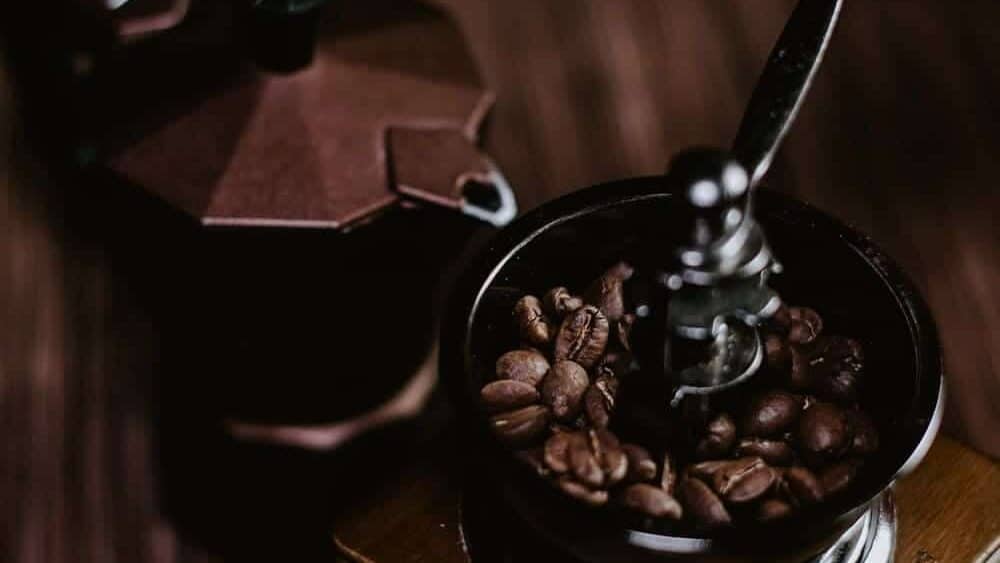
It starts with your favorite roasted beans and a coffee grinder. While high-end espresso machines may come with a built-in grinder, numerous models require that you buy a separate stainless steel or ceramic grinder.
Types of Grinders
There are 3 types of grinders:
- Stainless steel blades: These grinders crush and smash the coffee beans, but this can produce inconsistencies in flavor. They are generally the cheapest grinders on the market.
- Stainless steel burr grinder: The burr grinder is king and will ensure you have a consistent tasting coffee with every bit of flavor extracted from the beans. But stainless steel tends to overheat and can burn the beans, resulting in a bitter flavor.
- Ceramic burr grinder: This is top-of-the-line, as ceramic won’t overheat and burn your beans. You get consistency, reliability, and a grinder that lasts for years.
Pro Tip: Go for the cheapest grinder, and you might as well stick to pre-ground coffee. A high-quality grinder ensures you get the most aromas and flavors out of your beans. Don’t be afraid to spend a little more- it’s worth it!
4 Types of Coffee Grounds
Coffee grinders can be manual or electric. While the manual variety lets you adjust your grind according to your preferences, the electric variety offers several speeds and grind settings to choose from.
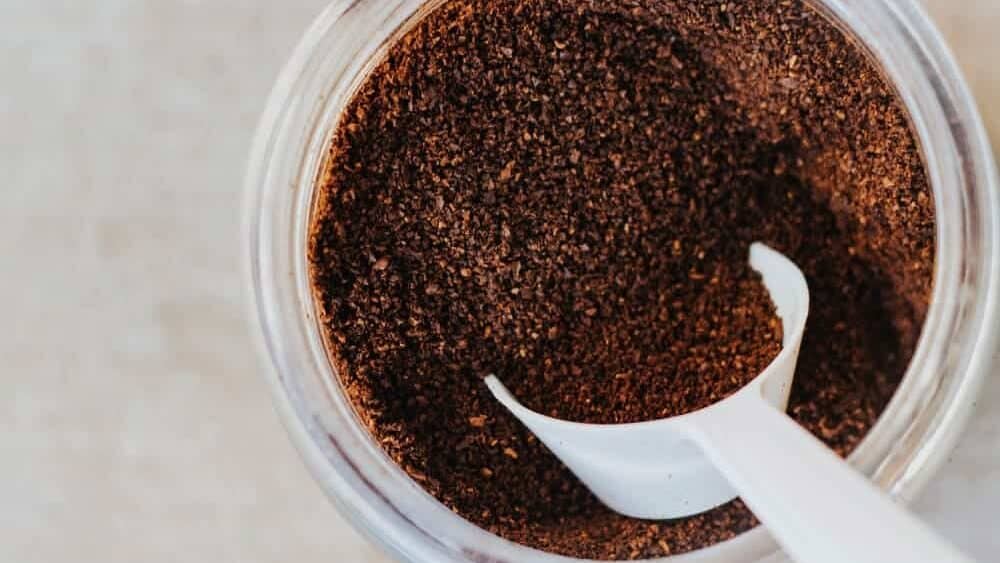
Although these are a starting base for how coarse or fine you want to go, there are four basic grinds. It also depends on the type of coffee machine you have. We’ll focus on the four most common for this article.
The Importance of Grind Consistency
Grinding coffee beans is all about consistency. Get this down, and you can bet that each cup you brew is just as flavorful as the last.
If your grind is inconsistent, you might end up with an unsavory mix of over/under-extracted grounds that taste chalky.

Quality grinders make it easy to achieve consistency, but you need to be more careful if you don’t have a grinder. The best way to control the consistency is to grind/crush only a few beans at a time. Then you can focus on the fineness of your grind and keep it uniform.
The grinding technique also plays a vital role, and as we go over the various methods to grind coffee beans without a grinder, we’ll cover the most effective ways to do it so your beans don’t go flying all over your kitchen.
Pro Tip: If you’re in a rush or your grind is coarse and uneven, don’t despair- you can brew using a French Press, which does well with a coarser grind and is more forgiving of inconsistent grounds.
Do’s and Don’ts of Grinding Coffee Beans
We are almost ready to start grinding some beans! But first, let’s get the formalities out of the way.
How to Prepare Your Work Area
The more prepared you are, the better. Depending on your experience, grinding coffee beans without a grinder takes patience and elbow grease to get it just right.
Alright, without further ado, let’s get to grinding.
Method #1: Mortar and Pestle
Technique: Hammering and Rolling
Best For: Coarse, Medium, Fine, Super Fine
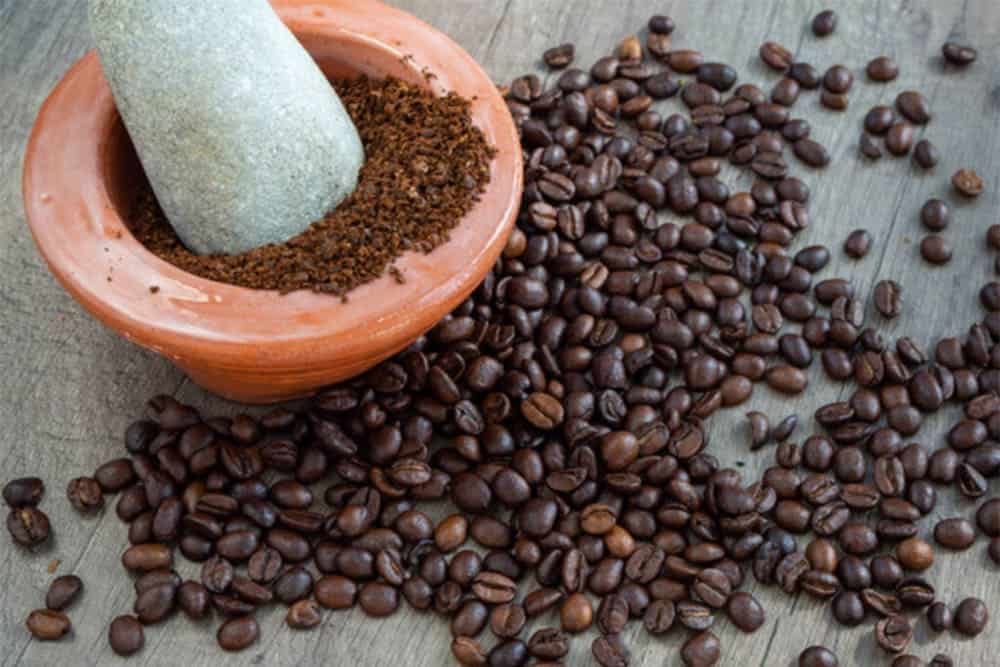
Do as your ancestors did and grind your way to coffee Nirvana.
You may have a heavy stone mortar and pestle lying around, and if not, your mom or neighbor might have one for you to borrow! This method will give you a solid arm workout, so get ready to feel the burn.
1. Fill the Mortar
Start by scooping a small number of coffee beans into the mortar. Remember to only fill it about ¼ full, so you can better control the consistency of the coffee. You can always grind a second batch.
2. Get Comfortable
Find a position that works for you so you can apply enough strength. Hold the pestle with your dominant hand and use the other hand to hold the mortar in place firmly.
3. Press, Crush, Roll
Next, apply force and press down to crush the beans, then twist with one fluid motion. Use the pestle to roll the coffee around in the mortar until it reaches the right consistency for your preference.
4. Grind Your Desired Amount
Keep grinding in small batches of beans using this technique until you’re ready to brew.
Pro Tip: Don’t get carried away and grind your beans into a powder. This might turn your coffee into sludge!
Method #2: Food Processor
Technique: Pulse
Best For: Coarse, Medium
Who doesn’t love a food processor? You just dump in your ingredients, hit a button, and the machine takes care of the dirty work—convenience at its finest.
And when it comes to how to grind coffee without a coffee grinder, the good news is that food processors closely resemble stainless steel blade coffee grinders.
The bad news? Well, blade grinders have a reputation for producing inconsistent results. Plus, you can’t manually “adjust” the fineness of the grind with a food processor. Still, this is a great alternative to grind your coffee beans when you’re in a jam.
1. Scoop Out Small Amounts of Coffee Into the Food Processor
As we keep saying, grind small amounts at a time! We can’t stress this enough- consistency is key.
As well, food processors heat up quickly, which can burn the coffee beans and turn your cup of joe into a bitter disappointment.
2. Use Short, Quick Bursts
Start pulsing your beans in short spurts so that the beans closest to the blades grind up as fine as possible. While grinding, gently tilt the processor, so the blades reach all of the beans.
Stop a few times to shake the processor, so larger pieces fall closer to the blades to even out the grind.
3. Add More Little by Little
Continue this pulsing and stopping routine, adding more beans once you see that your desired fineness has been achieved.
Pro Tip: It’s common for modern food processors to have a coffee grind function, so check for this setting first and use this to get the best consistency.
Method #3: Rolling Pin
Technique: Crush and Grind
Best For: Coarse, Medium, Fine
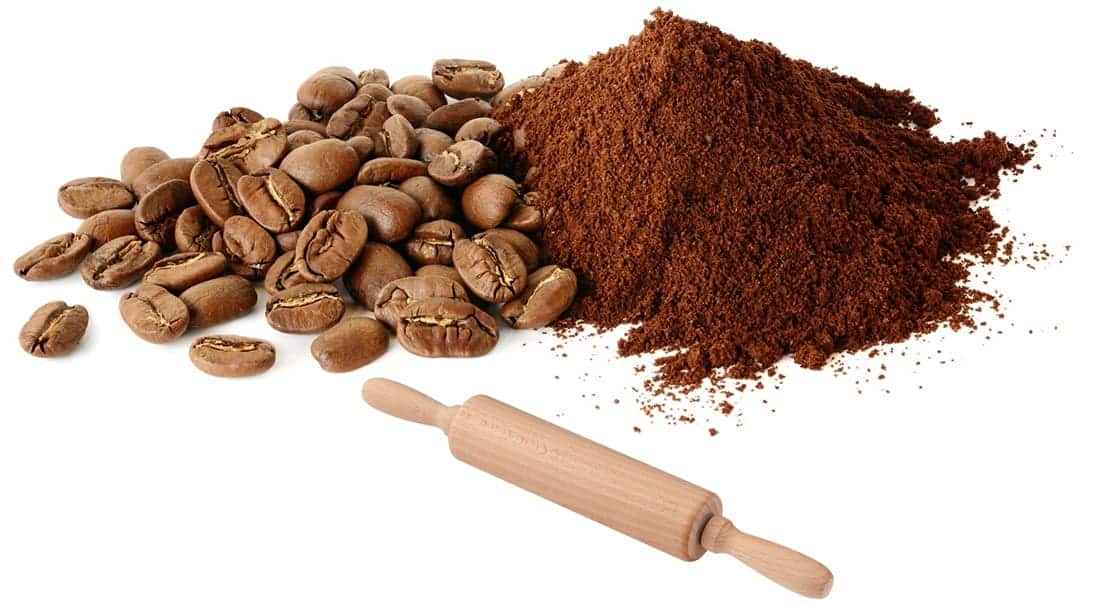
Believe it or not, you can achieve a fine grind with a rolling pin. This is one of the more reliable methods to grind coffee beans without a grinder because it keeps the grind more uniform.
You might want to stretch a little bit before rolling, as this method does require a substantial amount of strength and determination. Watch that consistency, and don’t go overboard!
1. Grab a Large Ziploc Bag or Parchment Paper
Scoop your coffee beans into a Ziploc bag or spread it out between two sheets of parchment paper.
2. Make Sure Your Workspace Is Clear
A kitchen counter or table is best. You’ll want to stand over the area and apply pressure on the rolling pin.
3. Press, Crush, Roll
Press down on the rolling pin and crush the beans. Then, roll the pin over the crushed beans, back and forth like you would with dough. Continue to roll until your desired consistency and texture are achieved.
Pro Tip: If you use parchment paper, fold up the sides to create a seal that prevents the beans from scattering.
Method #4: Hammer/ Mallet/ Meat Tenderizer
Technique: Crush
Best For: Course, Medium
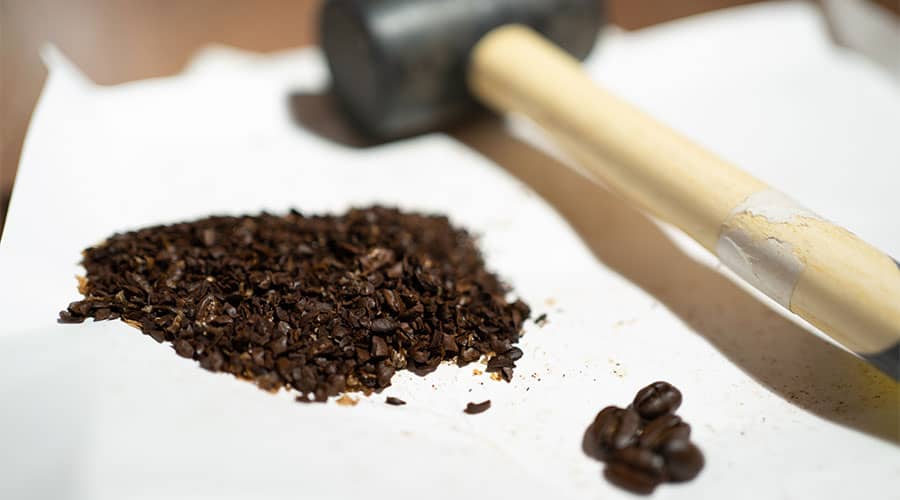
Need to relieve some stress? The hammer lets you get it all out of your system and enjoy a soothing cup of coffee afterward. Just don’t go overboard and smash holes in your kitchen appliances (or your hand)!
1. Set Up Your Space
Like with the rolling pin, you’ll want to utilize flat counter space or a table where you can work comfortably.
Fill your Ziploc bag with coffee beans or spread the beans between two sheets of parchment paper, folding up the sides to prevent scattering.
2. Press and Crush
We did say that this would be a stress reliever, but you aren’t whacking the beans. Instead, use the hammer to press down firmly on the beans, crushing them to your desired texture.
Pro Tip: Start at one end of your Ziploc bag and slowly crush the beans, working your way from one section of the bag to the next. This ensures you get every bit to enhance the consistency of the grind.
Method #5: Knife
Technique: Press and Crush
Best For: Coarse and Medium
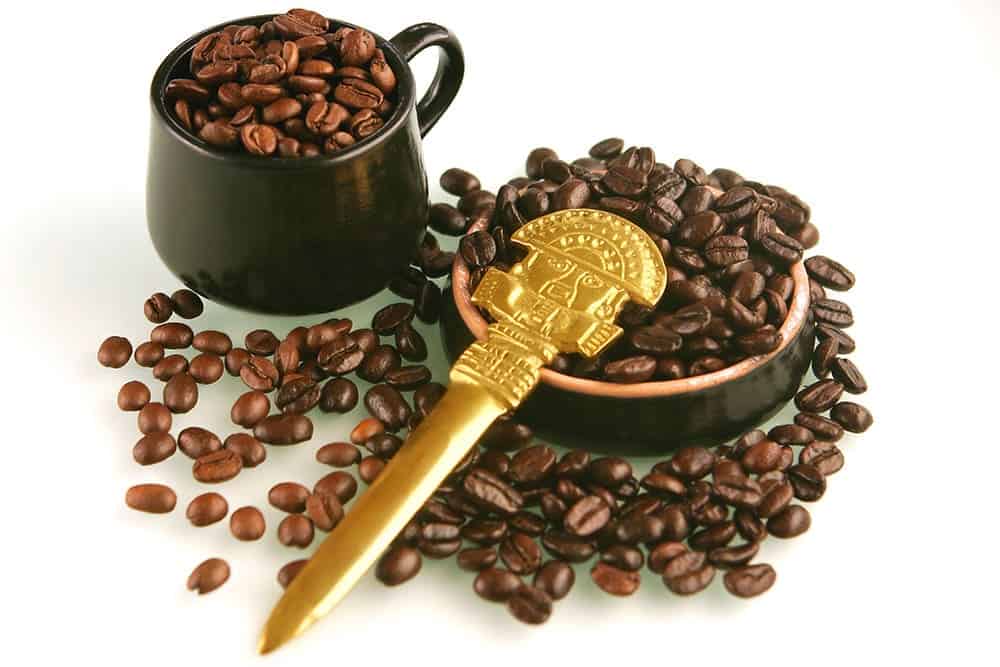
No, you’re not stabbing the beans. The idea here is to use the flat part of the blade to crush the beans, not the edge gently. Use a butcher’s knife or chef’s knife because it has a wider blade that is stiff and strong.
This is the same technique used to smash garlic cloves, giving you more control over the consistency.
1. Set Up a Large Cutting Board
Scoop a small number of coffee beans onto your cutting board. The board will prevent the beans from scatting.
2. Press and Crush
With the sharp tip of the knife pinned into the board, lay the flat part of the blade on top of the beans.
Place the palm of your hand over the flat part of the blade and press down carefully yet firmly.
The beans will break, and you can continue pressing down until they are fully crushed. You can achieve a finer grind by slightly pulling the blade towards you as you press.
3. No Chopping
Second nature might prompt you to chop the beans using the edge of the knife-like you would chopping vegetables. This will only send your beans flying all over the kitchen.
Pro Tip: Place a paper towel on top of the beans before you start pressing and crushing to prevent runaway grounds!
Method #6: Blender
Technique: Pulse
Best For: Coarse, Medium
This method is pretty much the same as using a food processor, but not everyone has a food processor. So, if you’ve got your blender handy, it will do the trick to grind up beans in a pinch.
Don’t expect a silky fine grind. The pulsing technique is enough to give you a coarse grind that’s best for the French Press or drip coffee pot.
1. Fill Your Blender
Remember to work with small amounts (about ¼ cup) at a time to watch the consistency. Blender blades can overheat and burn the beans, so avoid running the blender continuously.
2. Use Quick, Short Bursts
Pulse the blades in short bursts using a medium speed, stopping now and then to shake or stir the contents. This moves the larger bean pieces closer to the blades for chopping.
3. Remove the Grind and Add New Beans
Continue to blend the beans in small amounts, removing each batch when your desired consistency is reached and starting a new batch.
Pro Tip: Don’t forget to check for a grind setting! Just like food processors, some newer blenders have a grind function specifically for coffee beans.
How to Grind Coffee Beans Without a Grinder Conclusion
Learning how to grind coffee beans without a grinder isn’t the end of the world. The idea is to make the beans smaller, right?
All coffee lovers come to a point in their lives where they don’t have a coffee grinder handy and need to get creative because…coffee before everything! Luckily, there are plenty of tried and true methods that work just fine until you can get your hands on a grinder.
Remember to use patience and safety when working with these methods. You want to keep your grind as consistent as possible, and that means working with…you guessed it- small amounts of beans for the best flavors!
References & Resources:
- How to Grind Coffee Beans Without a Grinder: 6 Simple Ways (With Your Hands), Homegrounds.
- How to Grind Coffee Beans Without a Grinder, wikiHow.
- 4 Ways to Grind Coffee Beans Without a Grinder, TIPHERO.
- How Do I Grind Coffee Without a Coffee Grinder, Lifehacker.
- The Effect of Bean Origin and Temperature on Grinding Roasted Coffee, Nature.